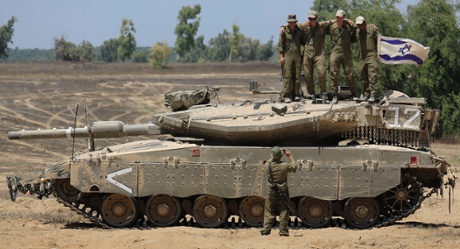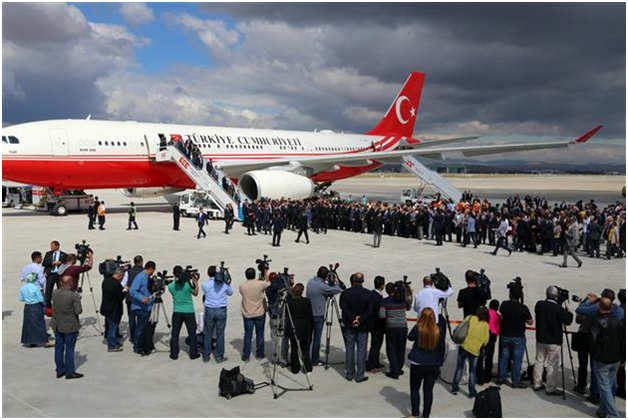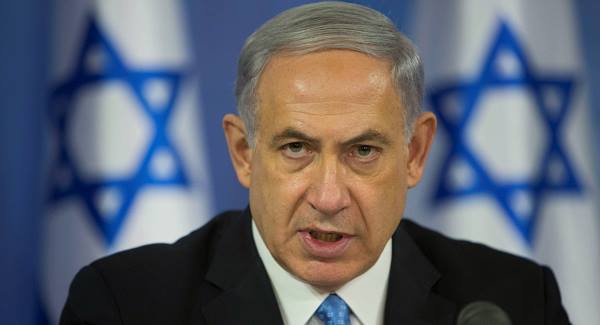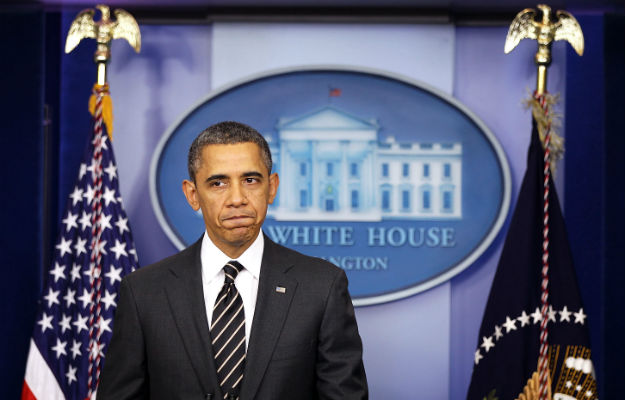Tom Jocelyn, the American counter terrorism expert and Senior Fellow at the Washington, DC-based Foundation for Defense of Democracies is the editor of The Long War Journal. It is a chronicle of the global Islamic jihad in the 21st Century, now in its 13th year. The global jihad was sparked by what the US State Department has taken to calling “core Al Qaeda”, most dramatically with 9/11. Subsequently it has metatisized driven by the Salafist doctrine seeking to replicate the great barbarism of the first jihad that burst out of the Arabian peninsula 14 Centuries ago. In many instances it has been a long war against indigenous populations, both Muslim and not. In the later case, it has witnessed the self-declared Caliphate of the Islamic State, formerly ISIS, confronting non-Muslims with the choice to convert, be subjugated, leave or be killed. It is sacralized barbarity emboldened with arms and advanced military technology abandoned by fleeing armies. It is financed by extortion and billions in booty, money seized in conquered territories and oil resources.

Israeli Merkava tank leaving Gaza staging area August 5, 2014. Source: The Guardian.
Virtually alone and surrounded by these Jihadist forces is the Jewish nation of Israel. Israel has conducted a long war of its own over the 21 years since the conclusion of the 1993 Oslo Accords with the Palestinian Authority. An agreement orchestrated by former President Clinton between Israeli Prime Minister, the late Yitzhak Rabin and the late Yassir Arafat, first President of the Palestinian Authority. Arafat went on to ignite the Second Intifada in September 2000 using the excuse that the late Israeli PM Ariel Sharon had made an unauthorized visit to the Temple Mount. That intifada saw thousands of Israeli causalities, both dead and wounded, that morphed into a seemingly unending series of military Operations. It began with Operation Defensive Shield following the bloody Park Hotel Passover suicide bombing in March 2002 that killed many Holocaust survivors. It culminated in the siege of Arafat in the Mukata in 2004 in Ramallah. A brief hiatus following the demise of Arafat saw Israel build a security barrier in the disputed territories that virtually brought to a close the Second Intifada. The late PM Sharon left Likud to found a new coalition party, Kadima, on the strength of a letter in 2004 with former President Bush giving Israel permission to defend itself with US assurances.
That led Sharon in 2005 to order the unilateral withdrawal from Gaza of 9000 settlers and 10,000 IDF personnel under the misguided pretext that it would make Israel more secure. The Bush Administration was preoccupied in the Long War in both Iraq and Afghanistan. It sought to foist the myopic view that the Islamist world could be transformed into budding western style democracies. This despite the rise of anti-democratic Muslim Brotherhood elements in Gaza, Egypt and other adjacent Muslim countries. They had been kept in check by autocracies supplied with both US and Russian military assistance and aid. Thus, the Bush Administration thought it had a willing peace partner in Arafat’s successor, the long serving PA President, Mahmoud Abbas. The Bush Administration prevailed upon Israel to relinquish its control over the strategic Philadelphi corridor along the Egyptian Gaza frontier installing Fatah bureaucrats. 2006 saw the one vote, one time election in Gaza of a Hamas dominated Palestinian Legislative Council. That lead to the June 2007 ejection and literal defenestration of Fatah from Gaza, leaving Hamas virtually in control. Israel was forced to engage in a series of air assaults that resulted in assassinations of Hamas leaders, co-founder Sheik Yassin and Dr. Rantisi. Hamas took over the Rafah border with Egypt through which arms, rockets and missiles were infiltrated along with huge infusions of cash from foreign Muslim charities and backers, Iran and Qatar.
In 2006 Israel was embroiled in the Second Lebanon War with Iran proxy Hezbollah supplied by the former with thousands of rockets. That conflict was triggered by a kidnapping of two IDF soldiers followed by massive Hezbollah artillery rocket barrages. The 34 day War with Hezbollah saw more than 4,000 rockets rain on Israel setting a pattern that was copied by Hamas in Gaza in 2009, 2012 and 2014. In that first clash with Hezbollah saw Israel’s population in the north sweltered in crude shelters or displaced to the central Mediterranean shore. It also sparked the development of technical countermeasures to protect the both Israel’s population and IDF defense. Those developments included the now recognized Iron Dome system of batteries equipped with Tamir anti-rocket missiles, and the less well known, Trophy system, used effectively in the most recent 2014 Operation protecting armored vehicles against anti-tank rockets and missiles. Just prior to the Second Lebanon War, a cross border raid by Hamas operatives kidnapped IDF soldier Gilad Schalit, holding him hostage until released in an October 2011 exchange for 1,027 Palestinian terrorist prisoners held by Israel.
In June 2009, President Obama made a dramatic speech at Cairo University extending outreach, many believed that emboldened Islamist elements in the Muslim ummah. In December,2011 the self-immolation of a fruit vendor in Tunisia sparked the so-called Arab Spring that erupted in North Africa and the Middle East. Autocracies in Tunisia, Libya and Egypt were overturned. The latter witnessed the ousting of strongman Mubarak with rise of the Muslim Brotherhood that saw the election of one if its prominent leaders, Mohammed Morsi as its President in June 2012. Morsi was backed by a National Assembly composed of dominate Muslim Brotherhood and Salafist parties. They sought to impose Sharia law on women, secular elements and the country’s ancient minority Coptic Christian community. Virtually, a year later, Morsi and thousands of Muslim Brotherhood leaders were ousted, jailed and killed during a coup by his Defense Minister Gen.Abdel- Fattah El-Sisi. He was engaged in a counter terrorism campaign against Hamas linked Salafist terror groups in the Sinai.
The overthrow of the Libyan strongman Qadaffi, with aid from the US and NATO, spawned chaos with warring tribal and jihadist militias. That culminating in the Benghazi attack that killed the US Ambassador and three other Americans, a communications aide, and two CIA-contractors on 9/11/2012.
Meanwhile, Israel was concerned about security on its southern border with Egypt in the Sinai. Following cross border attacks near the Red Sea resort of Eilat it constructed a 200 mile security barrier seeking to prevent intrusion, only to be left exposed to rocket attacks. On Israel’s north eastern Golan frontier a raging civil war in Syria, now well into its third year, saw the Assad regime forces ranging across the Golan frontier fighting opposition rebel groups. These included al Qaeda affiliates the Al Nusrah front and the extremist Salafist spinoff, the Islamic State, formerly ISIS.
The latest IDF Operation Protective Edge that began on July 8th with barrages from Gaza from both homemade and Iranian supplied long range rockets covered fourth fifths of Israel. It was triggered by a botched kidnapping by Hamas operatives and that resulted in the murder of three Jewish yeshiva students, whose remains were discovered on June 30th. The Palestinian Authority in late April had announced a unity government with Hamas that scuppered any chances of a possible final stage agreement sought by US Secretary of State Kerry. Hamas is a foreign terrorist group so designated by the US, Canada and the EU. Its 1988 Charter, had sought not only the destruction of Israel but the killing of Jews globally. Israeli PM Netanyahu and his coalition cabinet had no choice but to call up what ultimately would be a massed IDF force of 80,000 elite brigades and reservists to conduct the ground phase of Operation Protective Edge. That culminated in the launch of ground operations in Gaza that ended with the seventh truce on August 5th that is holding for the moment. That truce occurred ironically on the Jewish Fast Day of Tish B’Av commemorating historic catastrophes that have befallen the Jewish people over the millennia.
Jocelyn’s FDD Long War Journal had this entry:
Israel
Israel accepted a Gaza ceasefire plan that will start with a preliminary 72-hour truce beginning tomorrow morning. Israeli officials will work out further details of the ceasefire over the next few days in Egypt. As of Aug. 1, at least 2,909 rockets had been fired at Israel from Gaza and 66 Israelis had been killed. In the first fatal attack in Jerusalem in three years, a Palestinian construction worker drove an earthmover into a bus, flipping it over and killing one Israeli and wounding five more. PM Netanyahu’s spokesman said Israel’s military campaign to destroy the Gaza tunnels is coming to a close, but that the overall operation will not cease until Israel experiences an extended period of quiet and security.
Jonathan Spyer, of the GLORIA Centre in Herzliya, published an assessment of Israel’s Long War in a PJ Media article, “Netanyahu’s Long War Doctrine.” In it he paid tribute to Netanyahu’s cautious, but resolute position, overwhelmingly supported by Israelis, to bring to a conclusion the Hamas genocidal threat to the Jewish nation. A threat backed and financed by Qatar, a wealthy gas-rich emirate, a supporter of Muslim Brotherhood and extremist Salafist al Qaeda spinoffs. Qatar and the terrorist Salafist groups it funded and gave sanctuary to, including Hamas leaders, are viewed by Egypt, the UAE and Saudi Arabia as a dire threat to their regimes. That created a coalition of interest with Israel tacitly condoning the latter’s war against Hamas. The Administration in Washington and the UN were desperate to end hostilities seeking to engage MB supporting regimes in Turkey and Qatar to convince Hamas to stand down. Newly elected Egyptian President El-Sisi, who had ousted MB President Morsi and closed Gazan smuggling tunnels, had endeavored to broker several cease fires during the 28 day Operation Protective Edge. It became evident that Hamas had been seriously degraded, nearly three dozen terror tunnels neutralized, sustaining an estimated $5 billion in destruction of buildings and infrastructure in the 25 mile square area of Gaza. All while the world media falsely portrayed Israel as perpetrating mounting civilian casualties most graphically at UNWRA- run schools and refuge centers where over 180,000 Gaza residents had sought shelter. These schools were reported to have held rocket caches, that enabled Hamas rocketeers to launch barrages some of which misfired resulting in civilian casualties. This barbaric strategy was confirmed in a captured combat manual of Hamas uncovered by the IDF in Gaza City.
As to Israeli PM Netanyahu’s conduct of Operation Protective Edge Spyer observed:
Netanyahu, in stark contrast to his image in Europe and to a lesser extent in North America, is deeply cautious when it comes to the use of military force.
Indeed, the record shows that Israel elected to begin a ground campaign on July 18th only when it became clear from its actions and its statements that Hamas was not interested in a return to the status quo.
Netanyahu’s caution derives, rather, from his perception that what Israel calls “wars” or “operations” are really only episodes in a long war in which the country is engaged against those who seek its destruction. In the present phase, these forces are gathered largely under the banner of radical Islam.
Spyer concludes his assessment of Netanyahu:
Netanyahu’s vision is a chilly one, though it is not ultimately pessimistic. It aims to provide firm, durable walls for the house that the Jews of Israel have constructed. Within those walls the energies of Israeli Jews will ensure success — provided that the walls can be kept secure, thus believes the Israeli prime minister. It is from the point of view of this broader strategic picture that the current actions of Israel need to be understood. Operation Protective Edge — like Cast Lead and Orchard and Lebanon 2006 and the others — is intended as a single action in a long and unfinished war.
The Tish B’Av truce concluding Operation Protective Edge saw IDF forces leave Gaza, remaining ready if the truce is broken to return, if recalled. The current truce may still hold, but, will not last, unless and until Gaza is demilitarized and its leadership dispatched.
EDITORS NOTE: This column originally appeared on the New English Review.








 The American response of first
The American response of first 


